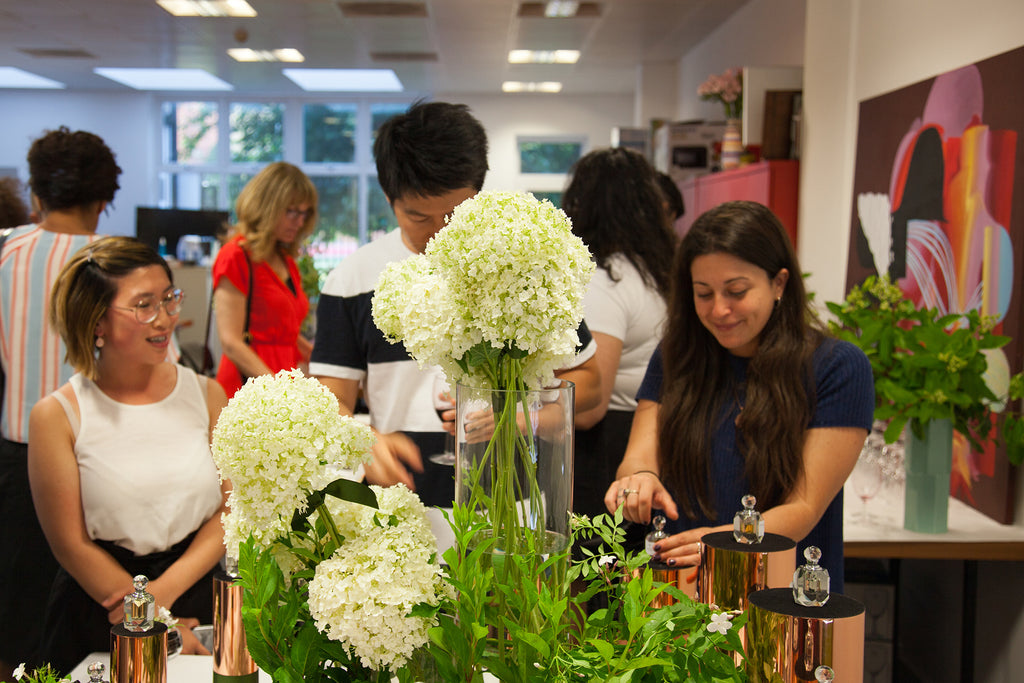In the captivating domain of natural perfumery, a noticeable dichotomy emerges between fragrances crafted from botanical wonders and their synthetic counterparts, frequently synthesized from petrochemicals and coal tar. Despite the growing fascination with natural perfumery, the market is saturated with products purporting to embody a connection with nature. This essay initiates a deep exploration of the seven challenges encountered by discerning consumers in their quest for authentic natural perfumery. It delves into the intricate complexities that contribute to the allure and occasional elusiveness of this aromatic art form.
1. The Deceptive Allure of ‘Natural’ Fragrances:
In the contemporary landscape of perfumery, the term ‘natural’ has transformed into a powerful marketing tool, promising a connection to the untainted purity of botanical essences. Kershen Teo, a luminary in the realm of natural perfumery, sheds light on the prevalent issue that the majority of perfumes lining store shelves are predominantly composed of synthetic ingredients. This misleading labeling poses a challenge for consumers sincerely seeking fragrances rooted in nature, prompting a profound exploration of the intricacies involved in crafting truly natural scents.

2. The Essence of Botanical Complexity:
At the heart of natural perfumery lies the use of aromatic compounds extracted directly from botanical sources. These compounds, responsible for the captivating scents of plants and flowers, are the products of complex biochemical processes within the flora. The challenge arises from the variability of these compounds, influenced by factors such as climate, soil conditions, and geographical location. Perfumers find themselves grappling with the volatile nature of these compounds, each possessing unique olfactory characteristics that can be lost or altered during the extraction process.
3. Extraction Methods and Sustainability:
The extraction of aromatic compounds from botanicals stands as a pivotal step in natural perfumery. Various methods, including steam distillation, solvent extraction, and cold pressing, are employed to capture the essence of plants. However, each method presents its own set of challenges. Steam distillation, a widely used technique, may not be suitable for all botanicals, risking the alteration or loss of delicate aromatic molecules. Meanwhile, concerns about environmental impact and sustainability surround solvent extraction.
The fragility of natural ecosystems, exacerbated by the demand for botanical ingredients, necessitates ethical considerations in ingredient sourcing. Overharvesting poses a threat to biodiversity, compelling responsible perfumers to navigate a delicate balance between creating enchanting fragrances and advocating for environmental sustainability.
4. The Art of Blending: A Symphony of Notes:
Crafting a natural perfume is an artful dance of blending aromatic compounds to create a harmonious olfactory experience. Perfumers, often referred to as ‘noses,’ rely on their olfactory intuition and sensory memory to blend top, middle, and base notes. Achieving the perfect balance requires an understanding of the volatility of each compound and the interplay between different notes. Natural perfumes, unlike their synthetic counterparts, are characterized by a unique evolution on the skin, with top notes giving way to deeper middle notes and anchoring base notes. This dynamic unfolding of scents is akin to composing a symphony, where the harmony of ingredients creates a sensory masterpiece.
In the realm of natural perfumery, the art of blending finds a parallel in the world of poetry. Like a poet selecting words to evoke emotions and paint vivid imagery, a perfumer meticulously chooses aromatic compounds to create a multi-layered sensory experience. Each note in a fragrance plays a role akin to a poetic line, contributing to the overall composition.
Just as a poet considers the rhythm, cadence, and emotional impact of each line in a poem, a perfumer contemplates the volatility, longevity, and olfactory nuances of each aromatic component. The parallels between the art of blending in natural perfumery and the crafting of poetic verses become evident as both pursuits demand a keen understanding of the chosen elements and their harmonious interaction.
5. Regulatory Challenges and the Scent of Authenticity:
6. Advancements in Synthetic Fragrance and the Quest for Authenticity:
7. Navigating the World of Natural Perfumery:
As the fascination with natural perfumery continues to rise, the internet serves as a vast repository of information, encompassing fragrance catalogs and reviews. Nevertheless, the wealth of available resources may pose a challenge for individuals venturing into the realm of natural scents. In response, Kershen Teo advocates for a deliberate and mindful approach, urging enthusiasts to retrain their noses away from the familiarity of synthetic perfumes. He emphasizes the importance of self-education through reading books and immersing oneself in the world of fragrance. To cultivate a heightened olfactory awareness, Teo recommends engaging in simple yet impactful activities, such as exploring individual botanical scents or creating personalized scent blotters. Through these practices, individuals can learn to discern the nuances of natural perfumery and distinguish it from its synthetic counterparts.

The Transformative Power of Smell:
Kershen Teo acknowledges the transformative power of smell, both in his personal creative process and as a means of connecting individuals to the present moment. The sensory journey through natural essences mirrors the philosophy of appreciating the nuances of aroma. Smelling, he contends, is an immediate and accessible pathway to heightened awareness, allowing individuals to connect with the past and the present through the evocative nature of scents.
In conclusion, the intricate art of natural perfumery unfolds as a poetic composition, where each aromatic note contributes to a symphony of scents. The challenges inherent in this pursuit only add to its allure, mirroring the complexity and beauty found in the verses of a carefully crafted poem. As the fragrance industry continues to evolve, the poetic parallels between natural perfumery and the art of poetry.



